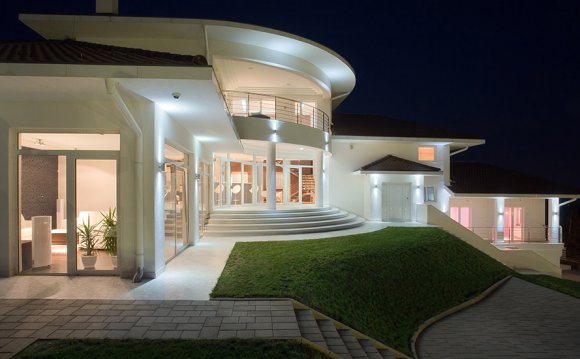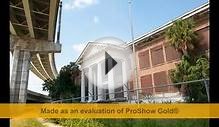
Roman art and architecture had a profound impact on the world we live in today by influencing modern city planning, architecture, and art. The early Roman structures were copies of Greek architectural forms, however, the Romans soon established their own identity by developing new building material and constructing unusual shapes and forms. The Roman Empire's most impressive contribution is their architecture. They created numerous structures, blending utility with beauty. Quarried stone, used in conjunction with timber beams, terra-cotta tiles and plaques, as well as marble, was the essential Roman building material from Republican times on ("Roman" Encarta'96). They also developed a totally new type of material which they called caementum (cement) and concretus (concrete). Cement is a fine, gray powder which is mixed with water and materials such as sand, gravel, and crushed stone to make concrete. Concrete is fireproof, watertight, and comparatively cheap and easy to make. When first mixed, concrete can be molded into almost any shape. It quickly hardens into an extremely strong material that lasts a long time and requires little care. The cement that was used by the Romans had such great durability that some of their buildings, roads, and bridges still exist. Concrete vaulting made possible the construction of the great amphitheaters and baths of the Roman world, as well as the dome of the Pantheon ("Roman"). They used huge vaulted halls, called basilica., for courtrooms and civic activities. Many of their most impressive buildings were constructed during the imperial period, from 27 B.C. to A.D. 476. Roman theaters first appeared in the late Republic. They were semicircular in plan and consisted of a tall stage building abutting a semicircular orchestra and tiered seating area. The earliest known amphitheater (75 BC) is at Pompeii, and the grandest, Rome's Colosseum (AD 70-80), held approximately 50, 000 spectators, roughly the capacity of today's large sports stadiums ("Roman"). The Pantheon is the only building of Imperial Rome to have withstood successfully the ravages of time and man (Morore 14). The porch reminds us of the Parthenon, but one can clearly see that the columns are Corinthian rather that Doric (Morore). The great vaulted dome is 142 ft in diameter, and the entire structure is lighted through one aperture, called an oculus, in the center of the dome ("Pantheon" Encarta'96). The Pantheon was erected by the Roman emperor Hadrian between AD 118 and 128, replacing a smaller temple built by the statesman Marcus Vipsanius Agrippa in 27 BC. In the early 7th century it was consecrated as a church, Santa Maria ad Martyres, to which act it owes its survival ("Pantheon"). Another great achievement, attributed to the Romans, was the layout of cities and the construction of apartment buildings. The typical Roman city of the later Republic...
RELATED VIDEO
![[PDF Download] Building the Modern Church: Roman Catholic](/img/video/pdf_download_building_the_modern_church.jpg)











